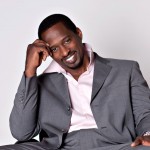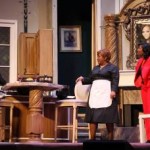Gia Coppola is the 27-year-old writer/director of a new film called “Palo Alto,” based on a book of stories by James Franco, who appears in the film. Other performers in the movie are, like Coppola, Hollywood-bred. Coppola is the granddaughter of Francis Ford Coppola (“The Godfather”) and niece of Sofia Coppola (“Lost in Translation”), and her young cast includes Emma Roberts (daughter of Eric, niece of Julia), Nat Wolff (son of “Thirty-Something’s Polly Draper), Christian Madsen (son of Michael), and Jack Kilmer (son of Val). “Palo Alto” is the story of high school students, centering on the vulnerable character played by Roberts. Coppola spoke to me about the cast — including her own mother — and about what it was best that she didn’t know before she started.
You have a superb cast in the film. Tell me a little bit about the casting process.
That is 90% of the job. It was really just kind of going with my gut. When I met Nat Wolff, he just seemed to really understand the characters. And even though he had not really played that sort of part before, it just seemed like he understood it more than anyone of the other kids I met and had the sort of skills to kind of go there. I saw him in a movie “Stuck in Love” and you could see he was sort of capable of going there. And then with Emma, she kept coming up in the conversation and I kept running into her randomly and it just felt like there was some sort of cosmic pull. I was a big fan of her work and she was super supportive and really fun to have around. So I was glad to have her as part of the project.
She’s got a wonderful vulnerability.
Yeah, yeah, yeah. She’s very complex in a sense. It was great to work with her, she’s really talented.
And you cast your mother in the film?
It was a lot of pulling us as many favors as I could and kind of get everyone to get together. I always knew my mom was a good actress. She didn’t want to do it but I begged her.
Was it hard to give her direction?
No. It was fun. She just kept always looking at me after the take and spiking the lens . (Laughs) It took a while to get her there.
How did you work with the costume designer and what did you ask for?
Courtney really got it. We really wanted something that was realistic. We just let the kids they wear their own close. We were low-budget so a lot of it was my clothes or my friends clothes. Just kind of letting them put the outfit together. Jack already had great style and our goal was dirty Converse rather than brand-new, clean ones.
I understand that you read this book before it was even published.
When I met James he had just finished his book and he wanted to make it into a movie. He thought from my pictures that it could be a good fit. He presented a few different ideas and this appealed to me most. I hadn’t really made a feature film before so it was to my advantage to not really know that working with short stories might be harder than it is. It was great because Jame really set the tone to give me freedom and have my own interpretation but then also very supportive and he kind of took me through it. He said, “Pick the stories you like the most” and then we made a test film of one of the stories to hear the words off the page and see what wasn’t working and what was working. I was able to discover that it should be an ensemble piece and combine the characters and make it fit for the screen.
I thought the music was especially good.
I mean I wanted something that was modern but also still classical and I was a big fan of Devonté Hynes. He took the kids’ emotions seriously and didn’t try to belittle it even though in hindsight it doesn’t seem like that big of a deal.
You came from the world of photography, moved to short non-narrative films and then now this narrative film. What was the biggest challenge in doing that?
It really felt like a collaborative experience and I was working with the same people on my smaller projects and so it was very comfortable and we all pitched in and we were all very enthusiastic. It was my first film and the boys was at my mom’s house and we are very much like a family. So the hardest part was saying goodbye and not getting to see these people every day after we kind of were in this grueling schedule of working six-day weeks.
Because of your background in photography, what were you looking for in terms of the cinematographer?
I worked with Autumn Durald who I worked with on my smaller films and we have a great kind of working relationship where we kind of communicate beyond words and it was just a lot of sending each other pictures. She really knows my aesthetic. My mentor in college was Stephen Shore. I loved his color palettes and his taking mundane things but finding them fascinating. I like the camera to be still and not very shaky and have everything happen within the frame.
The author of the stories, James Franco, also appeared in the film. Did he give you much feedback about the screenplay or about directing?
He really wanted me to have my own interpretations so he gave me a lot of liberty to do that. I kind of kept him updated, sending him pictures of what we were doing. And whenever I had a question I would email him or something and he was always very helpful. It was great to have him on set because he would tell us the inspiration behind all the characters. And he is a director so he could help me when I got stuck on set. It was really nice to have him, he’s a great teacher. He was really able to capture what it felt like to be a young teenage girl. I really connected with it and I was really impressed because it is not an easy thing to do.


